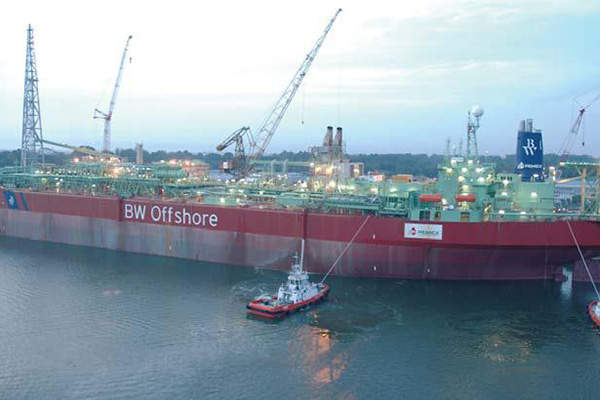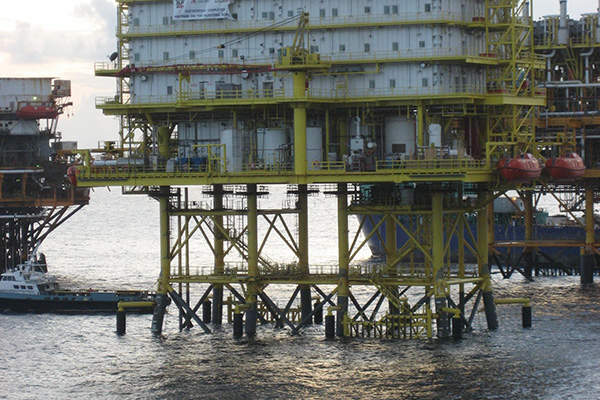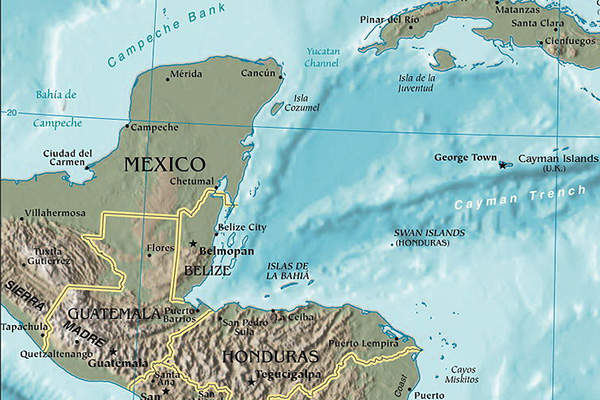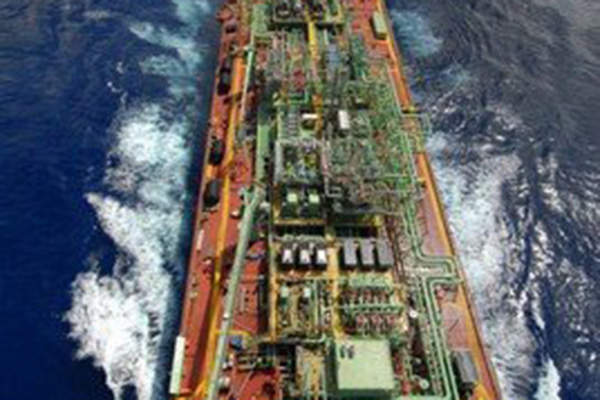
1979 – 1990s
The drilling of the Maalob 1 well in 1979 confirmed the discovery of the Ku-Maloob-Zaap (KMZ) field. It was said to be the second most important field in Mexico after Cantarell, and the world’s 23rd biggest reserve.
The first oil was produced from the Ku field in 1981. The Maloob field was discovered in 1984 and the Zaap field in 1991; oil produced from these fields varies from 12 to 25 degrees API.
2000
Related content
Ku-Maloob-Zaap Field, Mexico
Ku-Maloob-Zaap (KMZ) field is located off the coast of Tabasco and Campeche, 105km (65 miles) north-east of Ciudad del Carmen, Campeche.
In 2000, 42 of the 61 wells drilled at the field produced an average capacity of 284,600 million barrels of crude oil and 168.2mcf of natural gas per day.
The overall production from the field reached 1.5 million barrels of crude oil and 795.2Bcf of natural gas. It became the fourth biggest field in terms of the remaining reserves in Mexico.
2001
The fiscal year 2001 witnessed 40 wells producing at an average capacity of 247,000 barrels of crude oil and 152.5mcf of natural gas per day. Overall production from the field reached 1.6 billion barrels of crude oil and 850.9Bcf of natural gas.
2002
Pemex announced a major project known as the Ku-Maloob-Zaap Project to maintain a consistent production level by drilling additional wells and implementing pressure maintenance systems at the field. It invested MXN865 million (approximately $65.5m) for the expansion project in 2002.
By the end of the fiscal year, 40 wells produced at an average of 241,700 barrels of crude oil and 124.9mcf of natural gas per day.
The total production from the field reached 1.7 billion barrels of crude oil and 896.5Bcf of natural gas.
2003
The number of producing wells increased to 45, producing at an average capacity of 288,000 barrels of crude oil and 153mcf of natural gas per day.
The overall production from the field reached 1.8bn barrels of crude oil and 952.8Bcf of natural gas.
The company further invested MXN3.07bn (approximately $233m) for the project in 2003.
2004
In 2004, Ku-Maloob-Zaap stood as the third biggest field in the country in terms of remaining hydrocarbon reserves. Pemex further invested MXN10.22bn (approximately $774m) in the project during the year.
As of 2004, drilling was completed on 66 wells and the number of producing wells increased to 49. The field produced an average of 301,200 barrels of crude oil and 157.5mcf of natural gas per day.
The overall production from the field reached 1.9bn barrels of crude oil and one trillion cubic feet of natural gas.
2005
The field became the second biggest producer of crude oil in the country. By December 2005, 77 wells were drilled and the number of producing wells reached 62. Pemex invested MXN16.42bn (approximately $1.24bn) in the project during the year.
The field produced at an average of 319,000 barrels of crude oil and 166.4mcf of natural gas per day in 2005. Total cumulative production from the field reached two billion barrels of crude oil and 1.1Tcf of natural gas.
2006
2006 witnessed the installation of the 259,000 barrels per day KU-S platform, which was constructed with an investment of $250m. The construction of the accommodation platforms HA-KU-S and HA-KU-M was also completed. The number of drilled wells increased to 93 and the number of production wells increased to 74.
The field produced at an average of 394,200 barrels of crude oil and 201.2mcf of natural gas per day. The overall production from the field reached 2.2 billion barrels of crude oil, while the natural gas production remained the same as the previous year.
The company invested MXN26.72bn (approximately $2.02bn) in the Ku-Maloob-Zaap project during the year.
2007
The first floating production, storage and offloading (FPSO) vessel, named Yùum K’ak’náab (Lord of the Seas), in the Gulf of Mexico started operations at the field in 2007.
The investment for the project was MXN35.7bn (approximately $2.7bn). The number of drilled wells reached 139 and the number of production wells reached 108.
The average production stood at 527,300 barrels of crude oil and 212.2mcf of natural gas per day, while the cumulative production reached 2.4 billion barrels of crude oil and 1.2Tcf of natural gas.
2008
The number of wells drilled reached 159, whereas the number of production wells reached 128 at the end of the fiscal year 2008.
The field produced at an average of 706,100 barrels of crude oil and 272.8mcf of natural gas per day, and the cumulative production reached 2.7 billion barrels of crude oil and 1.3Tcf of natural gas.
Total expenditure on the project for the fiscal year was MXN21.12bn (approximately $1.6bn).
2009
Ku-Maloob-Zaap became Mexico’s biggest crude producing field in 2009, overtaking the production capacity of the neighbouring Cantarell field. The latter has witnessed a production decline in the recent years.
The number of drilled and production wells at KMZ reached 175 and 142 respectively. Investment on the project in 2009 was MXN20.89bn (approximately $1.58bn).
Average production capacity for the year was 808,000 barrels of crude oil and 327.2mcf of natural gas per day, while the cumulative production reached three billion barrels of crude oil and 1.5Tcf of natural gas.
2010
By the end of the fiscal year 2010 the field had a total of 185 wells, of which 146 were producing wells.
The average production rate for the year was 839,200 barrels of crude oil and 331.8mcf of natural gas per day, while the cumulative production reached 3.3 billion barrels of crude oil and 1.6Tcf of natural gas.
Investment on the project during the fiscal year was MXN18.35bn (approximately $1.39bn).
2011
The number of drilled wells increased to 197 and production wells reached 146. The field produced at an average of 842,000 barrels of crude oil and 330.9mcf of natural gas per day, which accounted for 33% and 5% of Pemex’s total crude oil and natural gas productions respectively.
The overall production reached 3.6 billion barrels of crude oil and 1.7Tcf of natural gas, while the yearly investment was MXN21.55bn (approximately $1.63bn).
2012
The Campeche Oriente exploratory project, which was formerly supported by Ku-Maloob-Zaap project was designated as a stand-alone project.
The field produced at an average of 855,100 barrels per day of crude oil and 329.7mcf per day of natural gas, which accounted for 33.6% of the company’s crude oil production and 5.2% of its natural gas production for the year.
The number of wells drilled at the field reached 208, while the production wells reached 163. Overall production from the field increased to 3.9 billion barrels of crude oil and 1.8Tcf of natural gas. The annual investment for the project was MXN22.72bn (approximately $1.72bn).
A fire broke out at the KU-S platform in January due to the explosion of a turbocompressor. The workers were evacuated on time and no injuries were reported.
2013
Drilling was completed on 217 wells, of which 177 were producing by the end of the fiscal year. The field produced at an average of 863,800 barrels of crude oil per day, accounting for 34.2% of the company’s total production, and 405.1mcf of natural gas per day during the fiscal. Cumulative production from the field reached 4.2 billion barrels of crude oil and two trillion cubic feet of natural gas.
Proven hydrocarbon reserves as of December 2013 reached 3.3 billion barrels of heavy Maya crude oil and 1.4 trillion cubic feet (Tcf) of natural gas. Total proven reserves stood at 3.6 billion barrels of oil equivalent, of which 2.7 billion barrels were developed.
The annual investment on the project in 2013 was MXN29.73bn (approximately $2.25bn).
2014
Pemex plans to invest MXN34.29bn (approximately $2.61bn) for the project this year, which will increase the Ku-Maloob-Zaap project’s overall development cost to approximately $20.1bn.













